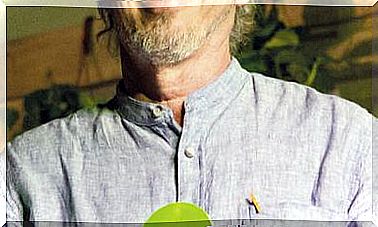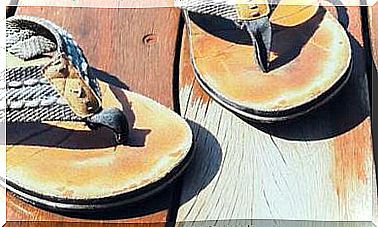10 Exercises To Deactivate The Pain Of Your Trigger Points

Dry needling technique eliminates trigger point pain
The workday progresses and, skeptically, but with slight hope, I look at my back. Yesterday I visited an acupuncturist on the advice of a friend. I did it with the intention of forgetting about the acute pain that every day settles where my right hand goes automatically, near the left shoulder.
This morning I woke up lighter, without that weight that has been accompanying me for more than a year. But I do not want to claim victory: massages, medication and other treatments have not succeeded so far.
I know it by heart: the passage of the day burdens it, the tensions accelerate the process and the pain settles, fixed, irritating, until it becomes unbearable.
Those were my thoughts from a week ago and now I smile. You may have finally found the solution.
According to my therapist, the problem was some “trigger points” that were making my life impossible. With patience, searching and with the help of his needles he was locating them one by one and undoing.
And in faith that he succeeded, because every time one of those trigger points was triggered, it did so, giving me a spasm. A sharp response of the musculature. A sudden release of everything that had been concentrated in that area.
Months of tension, of hours of work sitting in front of the computer with a bad posture, shot out at the contact of the blessed needle. A great contradiction, that of which the extremes touch. The pain was gone with pain.
Pioneer: Kennedy’s Dr. Janet G. Travell
Dry needling is a technique that began to make its way back in the 1960s, when Dr. Janet G. Travell, President John F. Kennedy’s personal physician, began to focus on muscle pain. This orthopedic surgeon searched for meaning and a solution to the chronic muscular discomfort suffered by her patients.
Although initially his efforts were aimed at making his progress known to physicians – his work was collected in two wonderful volumes – his work was largely adopted by manual therapists.
The technique began to be put into practice with the use of injections without liquid; hence its name dry needling. In the East, progress had been made in this line for years. Traditional Chinese Medicine already knew of the existence of these painful points, the so-called ashi points by them .
And to this day, he continues to treat them with acupuncture needles, the heat of moxa and the force of suction cups. Be that as it may, Dr. Travell’s theory was improved and simplified with the introduction of acupuncture needles.
For more than 15 years we can find manual therapists working with needles. The idea is simple: locate the painful point with manual palpation. Then it is directly punctured in the localized points, called “trigger points”, and if they are located they react with a muscle spasm that relaxes the painful contracture. More than a technique in itself, it is a powerful tool that is easy to learn and widely used.
Help to orient yourself on the pain map
This therapeutic tool is very powerful for two basic reasons. The first is the one that has already been explained: by using needles it undoes the trigger points. The second, at a similar level of importance, is that it helps to make a diagnosis.
Among the concepts included in the trigger point theory is that of referred pain. This pain manifests itself in a specific area depending on where the trigger point is. What is surprising is that the point is often located far from the area of pain.
If the manifestations of each point are known, a quick and reliable diagnosis can be made, that is, one knows where to look for the cause of the pain. Unexpectedly for the patient, the therapist is going to prod, therefore, not on the pain but away from it, but when he presses our muscle looking for the contracted area, we will feel that he is on the target.
Thus, each point has a pattern of pain. Thanks to the drawings that represent these patterns, the annoyance and the active point can be quickly related. It only remains to undo it.
When I look at those drawings of referred pain, aside from gratitude to the people who developed it, I imagine the amount of effort it took to get to these details. A level of specificity that serves to eliminate a lot of discomfort and make life more pleasant for many people.
How to detect a trigger point
The trigger point is undoubtedly the bad guy in the movie. And we still don’t know anything about him, or about “them”, rather, because each muscle has its own. To differentiate them, you have to look at the symptoms they produce, the aforementioned referred pain.
Thus, a trigger point is a very irritated area of the muscle. It is related to a hypersensitive nodule. The nodule is that little ball that we find and can often feel on our back. The one that bothers us, hurts us and we do everything to eliminate it. The one that seems to help us relieve pain when we squeeze it hard but that does not go away.
Apart from causing pain, due to the irritation it causes in the muscle tissues, the trigger point limits the ability of muscles to lengthen. For example, generating low back pain that does not allow us to stay in an upright position.
Shortened muscles need to be stretched
Very often the culprit is nothing more than a muscle shortened by an active trigger point. The same happens with a torticollis, in which we cannot turn the neck in its entirety.
Another possible accompanying symptom is loss of strength. When you have a short forearm, you may not be able to easily open a canning jar or turn the keys to the front door suddenly become a martyrdom.
Below the active points are the latent ones, which if pressed also cause pain. If we eliminate the former, those who are asleep may wake up, although their symptoms are rarely as acute as those of the main trigger point. It is worth keeping this in mind and knowing that with a single session all the symptoms will not disappear at the root.
Keep them at bay on a day-to-day basis
At the same time that the pain is eliminated, its causes must be investigated and see if they can be corrected so as not to relapse. In some cases, the origin is structural, such as a dismetria in the legs, which can be rectified with the help of a podiatrist. There may also be a nutritional cause, such as a diet poor in B or C vitamins.
But these days, emotional and physical imbalances are often the key to the matter. Stress and accumulated tension especially punish the upper part of the back. Fear, for example of flying, weakens the lower back. An excess of physical activity can also damage the muscles of the legs, if we are runners, or the upper trunk, when we abuse the gym.
The best antidote to pain is to keep the muscles elastic and well hydrated. Walking an hour a day for the sedentary or walking to work is a simple way to keep your muscles “awake” and toned.
Later, a short stretching session will leave us in optimal conditions. If you have a tendency to suffer from pain in a specific area of the body, it will be convenient to focus on stretching that affects that area.
Five minutes a day will be enough, always after moving, for example when arriving at work in the morning or after the daily walk. Thus the muscles are more elastic, better nourished by blood.
Live without pain
I think about my back again. Weeks go by and I think I can already claim victory. The pain has not returned. I get home without the irritation hooked on my shoulder and smile. Since I cannot change my work environment and I have not yet learned to take things differently, I have focused on following the advice of my therapist.
If I feel any discomfort, I press the trigger point that causes me problems for a couple of minutes. Little by little I notice how it falls apart. And then I don’t forget to do the stretches he recommended every day: now they have become my usual routine before opening the email. I say good morning to my body by giving it a slight attention and thanking that it continues to be happy.








